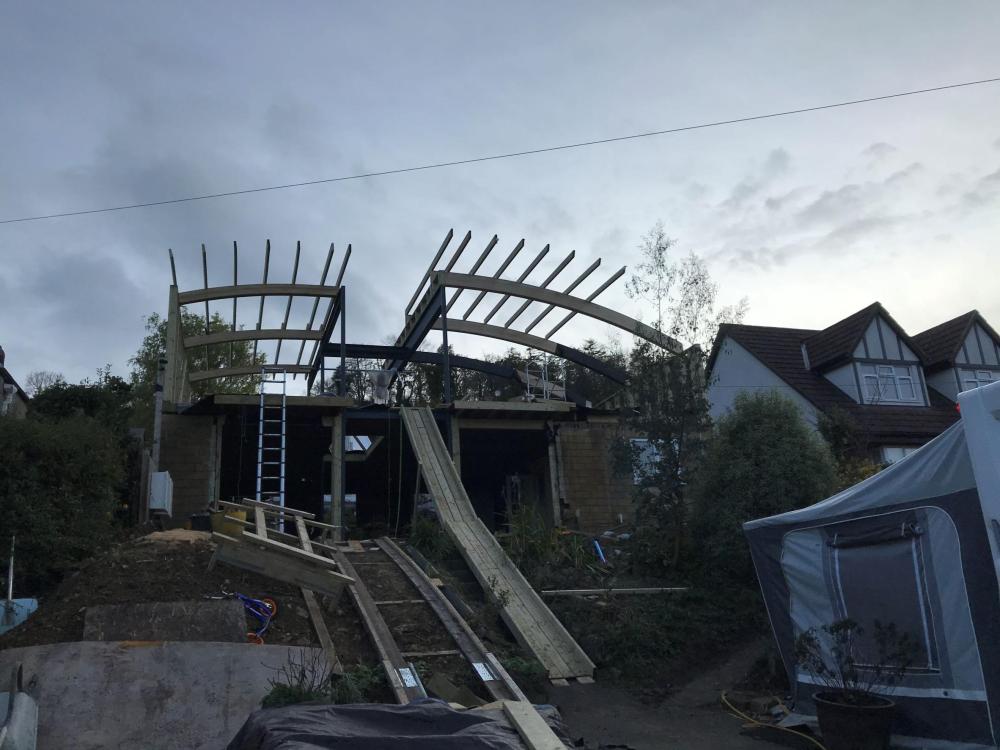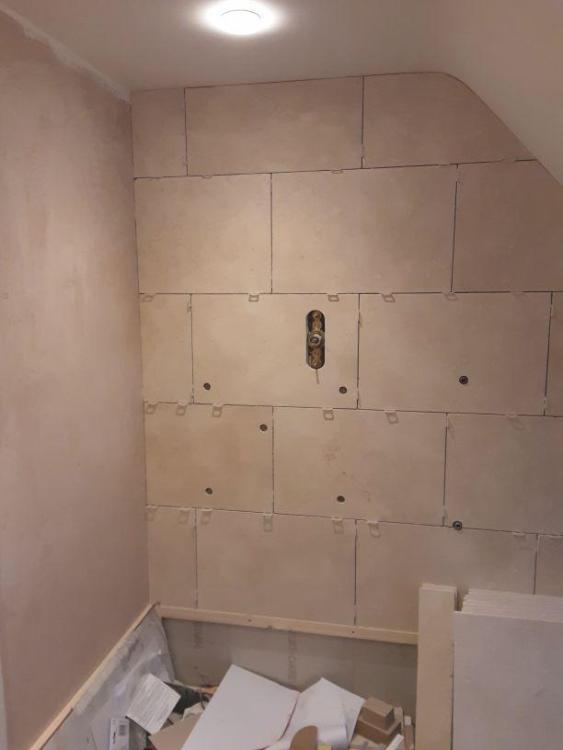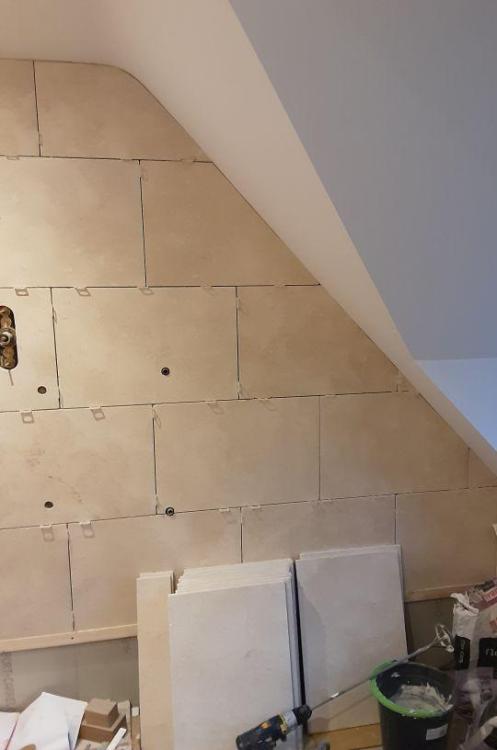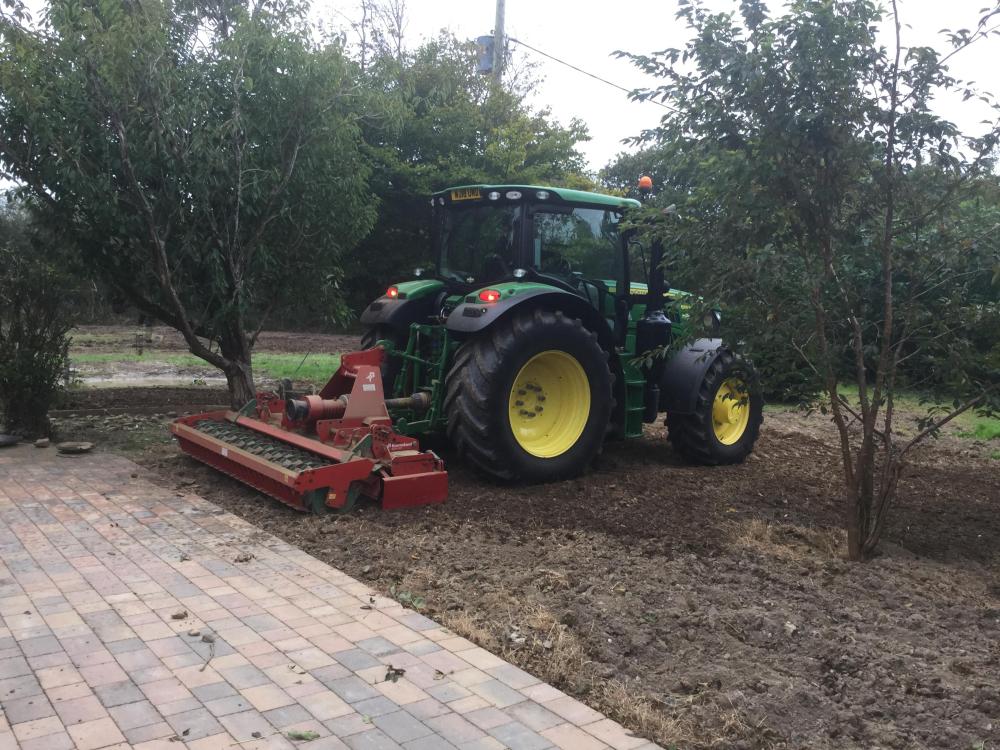Leaderboard
Popular Content
Showing content with the highest reputation on 04/15/22 in all areas
-
There is a difference between a product and the way a company conducts itself. Yes @Russell griffiths, there are far superior products out there, yes @SteamyTea many have had difficulties with the product. But as many traders have found - not least those who post very regularly on BH - businesses fail for all sorts of reasons. You may not like a product . Then don't buy it. Poor products deserve to fail. Just as poorly administered companies need to be reminded about the realities of the marketplace. A series of recent international events may or may not have contributed to the current situation. We just don't know. Yet. I am keen on evidence-based comment and discussion. Thats why I have written (perhaps too much) about Durisol. But I know nothing at all about the financial conduct of the company . And so, in my view the Schadenfreude above about Dursiol's descent into administration is entirely misplaced.2 points
-
When the time comes I will start a proper thread. That is not where I want it. Out of shot behind that view the burn makes a sharp 90 degree bend and at that point there is a natural rock constriction and faster flow. That is also right by the shed for easy connection. Another factor is that puts it upstream of next doors septic tank discharge so "nicer" for maintenance.2 points
-
As promised a little update on the Battery Storage. Firstly i'm very glad I bought when I did, as everything battery storage wise has skyrocketed in price since, even the prospect of adding a US2000C seems unlikely for now, though to be honest, going on my usage I don't think it would add a great deal of benefit. So I'm running the Solis 5th Generation AC Coupled Inverter, which does have a couple of niggles, which at present are reducing its savings potential. Those issues are: Whenever the battery isn't at 100% SOC, it pulls an amount of power from the grid, somewhere between 60W and 100W Even when the battery is actively charging, it still pulls the same 60-100W from the grid, regardless if there is enough PV power to charge the battery and cover loads at the same time. Once the battery is 100% SOC and im generating PV more than my load, I import 0W. Pulsating loads (such as induction hob) the unit can find hard to track, due to their pulsing nature, and the delay in reading the CT clamp and acting upon it. Now my base load is around 45W, so that means that since i've had the battery, i'm actually consuming more during the nighttime than i did previously, which is a negative. I got in touch with Solis UK Support about this issue, and they say they are aware of it, and are going to be adding 2 offset values which will be user configurable to combat this problem, and they've told me it will be available in around 2 weeks time, so we shall see. So although it will be a static value, i should be able to get much nearer to 0W import from grid whilst ever there is charge in the battery, but its not at 100%, and its not over its maximum demand (around 1.8kW). To better news, aside from the issues above which should get resolved, the system is essentially running off grid now, and has been since the middle to end of february, pretty much every day without fail, just with the odd bit of import for things like kettle and oven, to cover above the 1.8kW if the Solar isn't generating enough at the time, which is getting an ever smaller occurence. So the graph above is from March, with the Red bits on the top graph being the bits of import. The bit at the top showing 22kWh import, the majority of this was during the early february days after install when solar PV wasn't doing an awful lot. As you can see I'm still exporting ample amounts to the grid also, not that it would make any difference at this stage. Until I get the full years amount, its almost impossible to say how much this will have reduced by. Today I've done a load of washing and then dried it in the heat pump dryer, and following that I ran the oven on its Pyro clean cycle, and come tea time, i'll be fully charged again and ready for the evening (Thai Curry if you were wondering!). This one I'm keeping an eye on, obviously we know that these inverters will never be 100% efficient, but from those figures i've sent 177kWh to the battery, and only been able to get 124kWh back out again. Some of this will be down to the BMS consuming power to keep the battery healthy. So the inverter is 94.0% efficient at charging (100kWh sent to the battery will yield 94kWh of charge in the battery), and 94.5% efficient at discharging (1kWh being discharged from the battery will yield 945Wh). Please correct me if my maths is off! Entirely possible as I've got the plague at the moment! For how much its changed my import amounts, another tricky one which will have to wait for the end of this month, or maybe even next. I didn't get the smart meter installed til the end of March last year, but as a comparison: March 2021 (18th to 31st) - Imported 46.9kWh March 2022 (1st to 31st) - Imported 48.3kWh And this will drop further with the firmware upgrade. Will keep you posted in another couple of months time!1 point
-
Channel 4 Wednesday 9PM Started this week, I missed the first one I will have to watch it on catch up.1 point
-
5m head in this case isn't the height difference as you have a loop, as the water would find its own level, imagine a 'U' tube. The water coming down will be pushing the other water in the circuit up. So the 5m is the head loss from pipe friction and bends. I just time mine on for 30mins for the morning, as get up the same most days and the same in the evening. But I would be tempted to work out how often your cylinder would initiate start the heat pump to start running circulation continuously. I think you will be surprised, as I don't think it will be that often (every few hours). But insulation on pipes would be a good idea.1 point
-
ok thanks everyone i think i'll just forget i ever read about it!1 point
-
1 point
-
One option is a pipe stat on the loop so the pump runs until hot water returns to the cylinder. Then switches off until it cools down. Ideally you want to be able to control the hysteresis (temperature at which it switches on/off).1 point
-
I would say wall hanging needs to be designed in by the manufacturer. Generally thin wall pressurised vessel weighing more than a 100kg.1 point
-
Build a cylinder stool? like old airing cupboards?1 point
-
I prefer the Australian & New Zealand versions. Much more interesting projects going on down under IMO.1 point
-
We have 190m2 with a spacing of 300mm (more normal is 150 to 200mm). We have about 400m of pipe in the floor, which approx 46 litres. A close estimate would be to double my volume of water, divide by 190 then multiply with your area. A 6kW min load of a boiler/ heat pump requires approx 125 litres, for a 10min run time. Use the calculations in MCS manual I linked to earlier for the calcs. Hope this helps1 point
-
I use one of those super strong magnets (idea nicked from @Jeremy Harris) it finds the fixings in no time. I wrap it in a wet wipe so it doesn’t scratch the finish and is easier to pull off when it’s found it’s target.1 point
-
1 point
-
Some interesting ideas here, thanks. The idea is to fix the ply deck in place, and get the epdm up and at least resting in place all as one operation if possible, so as to minimise the time the ply is exposed to the risk of rain. I'll have at least one other person with me when I do all this, so I reckon I'll hire a genie for the day, and possibly a block tackle kit, then work my way through the various options. My concern about using the joists to winch the roll up, especially if I use a counter weight, is the amount of stress I'm placing on the joists. The whole of the joists are resting on a wall plate at one end (only on the inside leaf), but at the other end (above the steel) only the top chord of the joist is resting, and I may be taking a risk relying on that to take the weight.1 point
-
I would rather use a block of your finest cheddar than a thermalite, solid concrete block all day long for me.1 point
-
1 point
-
I reckon a ramp and pulley/hoist are your best ideas. It's surprising how only a small angle ramp reduces the effective weight of the material being lifted. Also gives you more control. You could also get some castor wheels and create a dolly for the EPDM roll, or as already suggested load it onto some plywood or OSB to slide along the ground. All my materials went up that way including the glulam beams either on my own or with one person helping. I bought a hoist that had enough cable to reach to the bottom of the driveway so could pull materials up from the roadside. It looks a bit weird and unconventional, but it worked and saved a shed load compared to hiring in lifting machinery.1 point
-
Well it does if the meter goes backwards, as you'd be breaking the law, but ultimately you're only going to confirm that by installing the solar and finding out.1 point
-
I think the long and short of it is that an engineer might not like the different methods of foundation support. They're likely to suggest this could result in differential settlement. If structure "A" is on piles and you're seeking to add an adjoining structure "B", an engineer is probably going to advise piled foundation for the new build. Of course, if you have a perfectly sound structure on conventional strip foundation, and are looking to add to that, then ground conditions may dictate that piling could prove the optimal choice, but perhaps not. Mixing foundation techniques (piled and strip) on any new structure however is likely to be less than ideal and an engineer may advise against it. Your best bet is to discuss it with maybe two different engineers, to get some idea of how its viewed.1 point
-
We have trench footing for the main house, single storey offshoot has a raft found due to made up ground. Movement joint in between, all specified by structural engineer which is what you need.1 point
-
Many have though. There is enough negative comments on here (and the predecessor site) about it.1 point
-
Bit of a worthless and obnoxious comment. I certainly had no issues with the product or the company.1 point
-
And the same applies to carpet one side (bedroom) and tiles the other side (en-suite)1 point
-
If you fancy being a real cheapo just drag in some garden furniture. Nothing says "luxury" more than a middle aged desperado, sprawled out, starkers, in a deck chair with a can of beer under a blasting shower.1 point
-
Bit lost with this. Currently sat on a leather and wood chair, on a wooden covered floor, all of which are insulators, so even if my slab was or wasn't earthed, I am not. The same would be true if stood bear footed upstairs in a timber kit house (wood floor support of wood structure). So what's the difference if your slab is or isn't insulated from ground contact? The UK has earth cables connected to every socket and switch in the house and these are run to earth. All conductors (copper pipes etc) are run to earth. Rebar should be covered by a min of 25mm of concrete in all directions, otherwise it suffers corrosion. So is not accessible. Might be needed in countries where an earth isn't routinely or mandatory to run - maybe USA? But seems a waste of time here.1 point
-
I have an insulated foundation (Kore type) and don't have this...and never heard of it and I've read just about every thread on here about insulated foundations.1 point
-
Getting there slowly. The bond pattern is working out ok. Main issue I'm having is that the stone isn't a constant thickness. The difference between thick ones and thin ones is 3mm. Overall I don't think its great quality stone but it will look ok when done. Lucky I have so many to cut I can cut off defects. Any tips for removing these levelling spacers?1 point
-
1 point
-
What you can do, is set the timers on the heating system so the ASHP does not turn on to heat DHW until 11AM. By then solar PV production should be good, so it is likely the ASHP will be using up a good chunk of your solar generation. It's about the best you can do, other than (if you are in all day) manually turning on the ASHP when the sun comes out. That, and shifting all the big appliances to the middle of the day and the immersion diverter means I don't export much of my PV.1 point
-
No. For the simple reason your heatpump will have a min draw of something like 1.5kW. Your excess PV generation could be something as low as 200W... Which would mean if your heat pump is on, it'll be drawing much more power from the grid, negating any COP advantage over a immersion coil. The solar diverter will control the power to the immersion to match the excess generation, and can do this from a few Watts up to 3kW. We'll be setting our heatpump if for cooling and time for during the peak afternoon... So if cooling is needed in theory most of the power will come from the 4.5kW array, and only some from the grid. At this time of year we're not producing enough to power the heatpump, so still on the immersion1 point
-
Hi Dev. Current build cost here is about £1500/m² for modest standard. We're coming in at £1250 but we did a lot ourselves and missed most of the recent price rises. For a full contractor build, more like £2000m². For a 4 bed and garage you'd be looking at at least £400k. Yes, normally purchase of land contingent on planning permission. You'll need representative drawings for outline planning. Architech can do this and the application for you. Check services before you go any further; water, sewer electric and telephone. Check local planning website to see what had been applied for and passed in the area recently to get an idea of type of house you could have.1 point
-
Hi @Matt540 The buffer tank is, designed to avoid short cycling. A cycle begins when the ASHP starts the heating the circulating water, and continues until the return water temperature meets the ASHP "hot enough" set temperature, and then turns off until the water temperature becomes lower than the "turn on" set temperature. The importance of this is that in tests its noted that an ASHP needs to get going before it reaches its best performance (COP) and then when turning off it does the same in reverse. Because of this the ASHP should aim to heat for at least 10min. The problem of Buffer or no Buffer is to do with the quantity of water in each individually controlled emitter zone. We have a buffer and radiators which have TRVs ( TVRs because we get north south solar gain problems). If we didn't have a buffer tank, and only one radiator was to work, the small amount of water in the system (ASHP to one radiator and back) would heat up quite quickly causing the ASHP to short cycle thus being inefficient. So to answer your question in my opinion the reason some use buffers and some don't is dependant on what the ASHP is connected to. It appears that radiators with no TVRs may work and large areas of UFH may work. However as @JohnMo says buffers usually have the option of an immersion to give additional heat in exceptional circumstances like if the ASHP breaks down (assuming like me you have a pump circulating the water from the buffer to the emitters) or a very cold spell. Hope this helps Marvin1 point
-
Personally I’ve never believed that gas boilers would be fazed out Certainly not in my lifetime We will go from a gas boiler to ASHP on our next build I’m expecting that it will be 20% more expensive to run plus a much higher initial outlay All on a very well insulated home What chance have these leaky homes that are having ASHP fitted retrospectively It all sounds like the solar energy program from a few years back Ten years down the line Is there going to be solicitors offering no win no fee to people who have been mis sold ASHPs1 point
-
1 point
-
Yes, preheat is via a "44kW" rated PHE, but that's pretty much the same rating as the coil in the indirect buffer tank. The rating is very highly dependent on the actual temperature differential - halve the temperature differential and you halve the heat transfer rating. What I was thinking of, as a good solution for combined ASHP buffer tank and DHW preheat system, was a direct TS of around 70 litres or so, and with a standard DHW coil in the top section. There's no point in having more than about 100 litres, as the buffer only has to provide preheat to the DHW, so the power needed is around half that needed if the buffer/TS was running at a higher temperature. The ASHP will provide constant top up to the TS when it cools a bit, too, acting as an additional "instant heat" source, in effect. I would hazard a guess that the Telford guys were thinking in terms of "normal" DHW temperature, rather than just preheating to maybe 30 deg C or so. It makes a big difference just dropping the temperature requirement a bit. This only makes sense if you're running an ASHP, want to keep the COP high and have another means of boosting the water temperature up to normal DHW temperature. With a single Sunamp PV, the effective combined capacity with a 70 litre preheat buffer plus a 6kW ASHP is close to double the capacity of the Sunamp PV on its own, plus the buffer/TS could still do it's normal job of providing a direct buffer store for the ASHP when it's running the UFH.1 point
-
You can't have the BH shame cup, & the BH longest ever ever thread cup too. So greedy.0 points
-
0 points
-
It was in reference to his last place in Kent where he gave away loads of stuff on Freegle etc. A lot from when the old house came down, when he changed from oil etc. Mind he helped me out with a few bits. For example some parts for the Geberit wall hung WC. Everytime I have a sh!t I think of him!0 points
-
That bench looks perfectly well organised to me @zoothorn Everything visible, everything to hand, plenty of light, electricity on tap. Wait until you feel ashamed - unprepared to show BH members a photo - of your tool bench before you decide how to organise it. The longer you wait, the better and cheaper the design. I can just about walk into my workshop - almost.0 points
-
I'm guessing he might mean distributing them around the place pre lifting?0 points
-
0 points
-
0 points
-
I once had an issue on a house where the electrician would get a shock when he touched a wall light on the stairs. It turned out that the wall light was fine but he had one foot on the stainless handrail to keep his balance. The handrail installer had used a very long screw and this made the handrail live. No issue until he provided a path to earth via the light fitting.0 points
-
0 points
-
0 points
-
0 points
-
0 points
This leaderboard is set to London/GMT+01:00















